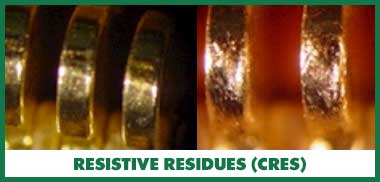EXTRACTION
Carbon dioxide (CO2 ) extraction technology leverages the unique chemical and physical properties of CO2 to perform efficient, safe, and environmentally friendly extraction processes across various industries. CO2 is a simple, non-toxic, non-flammable, and versatile molecule capable of existing in multiple phases—gas, liquid, supercritical fluid, or plasma—depending on pressure and temperature conditions. This tunability allows it to serve as an effective solvent for extraction, cleaning, surface treatment, and lubrication applications.
Liquid and supercritical CO2 extraction methods have evolved since the 1980s, with liquid CO2 (LCO2) emerging as a preferred agent due to its ability to operate at lower pressures and temperatures while maintaining comparable extraction performance to supercritical CO2 (scCO2). LCO2 offers sustainable benefits, including lower energy consumption, reduced carbon footprint, and cost-effective recycling during processes such as precision cleaning, polymer outgassing, and natural product extraction.
CO2’s physical properties, especially diffusivity, enable efficient dissolution of solids and selective extraction. Advanced centrifugal LCO2 extraction systems have been developed, providing automated, high-throughput, and environmentally responsible solutions for complex manufactured components, including biomedical implants, aerospace materials, and precision mechanical parts.
Applications span from removing contaminants in medical and electronic devices to extracting valuable compounds from plants, such as terpenes and cannabinoids, using tunable, semi-aqueous CO2 extraction platforms. The technology also supports oxygen service system cleaning, replacing hazardous solvents with EPA- and NASA-approved methods.
A highlighted case study involves The Gillette Company’s replacement of perchloroethylene (PERC) oil extraction methods with a centrifugal LCO2 process. This transition improved extraction speed, reduced residual solvents, minimized environmental risks, and reduced operational costs, demonstrating the practical advantages of CO2-based extraction technology in industrial settings.
Highlights
- CO2 is a safe, non-toxic, and versatile solvent with multiple phase states enabling diverse industrial applications.
- Liquid CO2 extraction offers sustainable, energy-efficient, and cost-effective alternatives to conventional solvents.
- Centrifugal LCO2 extraction systems enable high-throughput, automated, and precise cleaning and extraction processes.
- CO2 extraction is widely applied in natural product processing for selective and tunable extraction of bioactive compounds.
- Medical and aerospace sectors benefit from CO2 extraction for contaminant removal on complex substrates and devices.
- CO2 cleaning technologies comply with stringent regulatory standards, replacing hazardous solvents in critical applications.
- Industrial case studies demonstrate CO2 extraction’s superior performance, reduced liability, and environmental benefits.
Key Insights
-
Molecular Characteristics Define Versatility: CO2’s linear, nonpolar chemical structure and ability to shift between gas, liquid, and supercritical states under moderate conditions make it an exceptional solvent. This adaptability allows for fine control over solubility and selectivity, critical for tailored extraction processes in pharmaceuticals, polymers, and natural products. The ability to adjust pressure and temperature parameters provides a customizable extraction environment unmatched by traditional solvents.
-
Liquid CO2 vs. Supercritical CO2: While supercritical CO2 offers higher selectivity and tunability suited for fractionation and purification, liquid CO2 provides comparable solvency at lower pressures and temperatures, resulting in simpler, less expensive equipment and safer operating conditions. The mechanical optimization of LCO2 extraction (e.g., centrifugal fluid shear) enhances mass transfer and extraction efficiency, making it particularly effective for exhaustive cleaning and large-scale applications with sustainability advantages.
-
Diffusivity Enhances Extraction Efficiency: Dense phase CO2 exhibits gas-like diffusivity, significantly higher than typical liquid solvents. This property accelerates mass transfer rates, improving the dissolution of solids into CO2 and enabling rapid, thorough extraction from complex matrices. However, this advantage mainly applies to solid-liquid extractions rather than liquid-liquid systems, requiring process-specific evaluation to optimize performance and cost-effectiveness.
-
Industrial Scale Applications and Automation: The development of centrifugal LCO2 extraction systems, featuring PLC automation, bi-directional centrifuges, and tiered baskets, supports continuous, high-capacity processing. This design enables reliable extraction of contaminants, oils, and machining residues from densely packed substrates, such as ball-point pen tips or implantable medical devices, with extraction times reduced from hours to minutes.
-
Environmental and Regulatory Compliance: CO2 extraction technology aligns with sustainability goals by minimizing hazardous solvent use, lowering energy consumption, and facilitating solvent recycling in place. Its acceptance by agencies like the USEPA and NASA as a replacement for toxic cleaning agents underscores its growing importance in regulatory-compliant manufacturing, especially in oxygen service systems and aerospace components.
-
Natural Product Extraction Advances: Semi-aqueous CO2 extraction platforms enable selective isolation of bioactive compounds such as terpenes, cannabinoids, and flavonoids from plants. In-situ cryogenic treatments further refine extracts by removing unwanted lipids and waxes, producing concentrated, full-spectrum products. This tunability supports innovation in nutraceuticals, pharmaceuticals, and cosmetics, where purity and specificity are critical.
-
Case Study – Transition from Hazardous Solvents: The Gillette Company’s move from PERC-based extraction to centrifugal LCO2 demonstrates the practical benefits of CO2 technology in reducing environmental contamination risks at manufacturing sites. The new process improved extraction speed, lowered residual solvent contamination, enhanced product quality, and minimized long-term liabilities related to soil and groundwater pollution, highlighting CO2 extraction’s role in responsible industrial transformation.
In conclusion, CO2 extraction technology offers a multifaceted, sustainable alternative to traditional solvent-based methods. Its adaptability across states of matter, superior diffusivity, and compatibility with advanced mechanical systems allow it to meet stringent industry demands in cleaning, extraction, and surface treatment. With increasing regulatory pressures and sustainability targets, CO2-based processes are poised to become standard in diverse manufacturing and natural product extraction applications.











